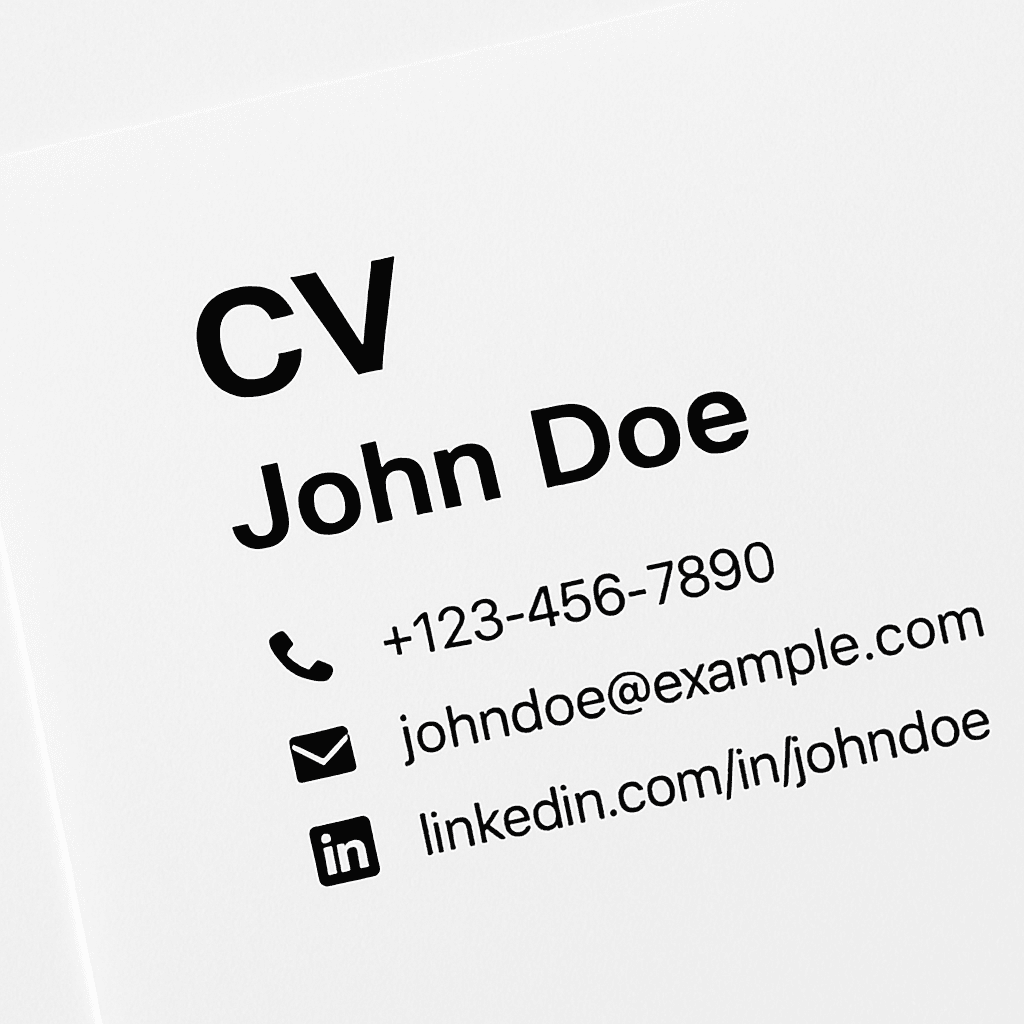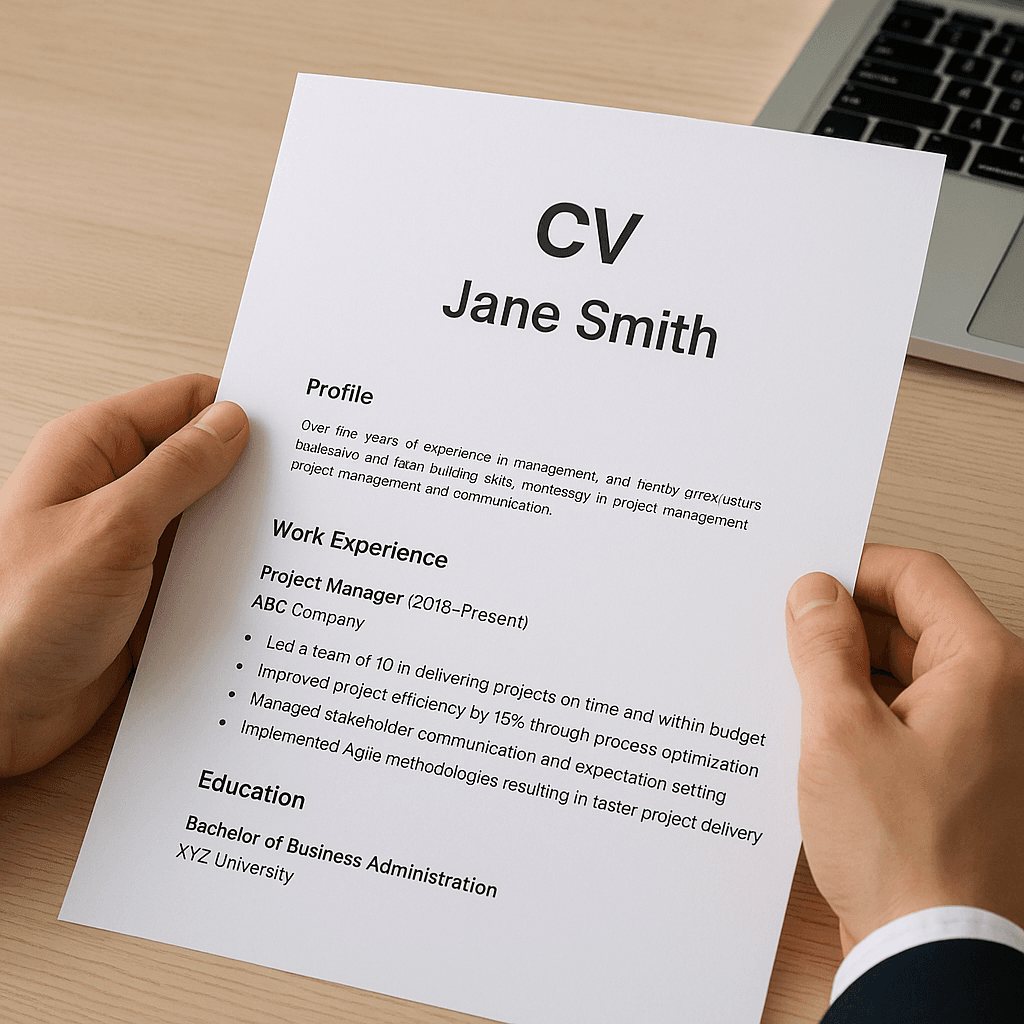Introduction

Looking for a job but not sure how to grab an employer’s attention? The answer lies in your CV. A CV (Curriculum Vitae) isn’t just a list of your qualifications—it’s your personal marketing tool. If done right, it can open doors to interviews and career opportunities. But if it’s sloppy, generic, or boring, your application may never even be read.
Let’s dive into a step-by-step guide on how to write a CV for job applications that actually works.
Understanding the Purpose of a CV
Think of your CV as your professional story. It tells employers who you are, what you’ve done, and what you can bring to their company. But here’s the catch: employers don’t have all day. On average, recruiters scan a CV in 7 seconds. That means you need to get to the point fast.
Your CV isn’t about listing every job you’ve ever had. It’s about highlighting the most relevant experiences and skills for the role you’re applying for.
Types of CV Formats
Chronological CV
This is the most common format. It lists your work experience in reverse order, starting with the most recent. Best if you have steady work experience in the same field.
Functional CV
Focuses on skills rather than job history. Perfect if you’re changing careers or have gaps in employment.
Combination CV
Blends both styles—showcases skills and provides a work timeline. Good for professionals with solid experience and strong skills.
Which One Should You Choose?
- If you have experience → Chronological
- If you’re switching careers → Functional
- If you want flexibility → Combination
Essential Sections of a CV

Every CV should have these key parts:
- Personal Information
- Professional Summary or Objective
- Work Experience
- Education
- Skills
- Certifications & Training
- Achievements & Awards
- References
Let’s break each one down.
Writing a Powerful Professional Summary
This is your elevator pitch. In 3–4 lines, explain who you are, what you’ve done, and what makes you the right fit.
✅ Example:
“Results-driven digital marketer with 5+ years of experience in SEO and content strategy. Skilled in growing organic traffic and increasing brand visibility. Passionate about data-driven campaigns that convert.”
Showcasing Work Experience

Instead of writing boring job duties, show results.
❌ Wrong: “Responsible for managing social media accounts.”
✅ Right: “Grew company Instagram following from 5,000 to 50,000 in 12 months, increasing sales by 20%.”
Use action verbs like managed, developed, achieved, increased, boosted.
Education Section
- If you’re a fresh graduate, put education before experience.
- If you’re experienced, education can go after work history.
- Include degree, institution, and graduation year.
Highlighting Skills
Split into two categories:
- Hard Skills: Technical abilities (coding, graphic design, data analysis).
- Soft Skills: Personal qualities (teamwork, problem-solving, leadership).
Pro tip: Only list skills relevant to the job.
Certifications and Training
Adding certifications makes you more competitive. For example:
- Google Analytics Certification
- AWS Certified Solutions Architect
- Project Management Professional (PMP)
Employers love seeing continuous learning.
Achievements and Awards
Show off your wins! Use numbers whenever possible.
Example: “Employee of the Month – Increased sales by 30% in Q2 2024.”
References
It’s no longer necessary to write “References available upon request”. Instead, either:
- Provide 2–3 references with names and contact info, or
- Leave them out and prepare to give them when asked.
Formatting Your CV
- Use clean fonts (Arial, Calibri, Helvetica).
- Font size: 10–12 pt for text, 14–16 pt for headings.
- Keep length 1–2 pages.
- Use bullet points for readability.
- Ensure spacing and margins are consistent.
Common Mistakes to Avoid
- Typos and grammar mistakes (run it through Grammarly).
- Including irrelevant jobs from 15 years ago.
- Making it 5 pages long. Recruiters won’t read it.
Tips to Tailor Your CV for Each Job Application
- Scan the job description and match keywords.
- Adjust your skills section based on requirements.
- Highlight experiences that align with the company’s goals.
Modern CV Tools & Templates
You don’t have to start from scratch. Platforms like Canva, Zety, or Novoresume offer professional templates. Choose simple, ATS-friendly designs.
Conclusion
Writing a CV for a job application doesn’t have to be overwhelming. Keep it simple, highlight your best achievements, and tailor it for each role. Remember, your CV isn’t just about your past—it’s about convincing employers you’re the right person for their future.
FAQs
1. Should a CV be one or two pages?
Ideally 1–2 pages. Keep it concise but detailed enough to show your value.
2. Can I use the same CV for every job?
You can, but you shouldn’t. Always tailor your CV for the specific role.
3. Should I include hobbies and interests?
Only if they’re relevant (e.g., teamwork in sports, creativity in painting).
4. How far back should my work history go?
Usually the last 10 years, unless older experience is highly relevant.
5. What’s the difference between CV and Resume?
A CV is detailed and often longer, while a resume is shorter (1 page) and focused.


